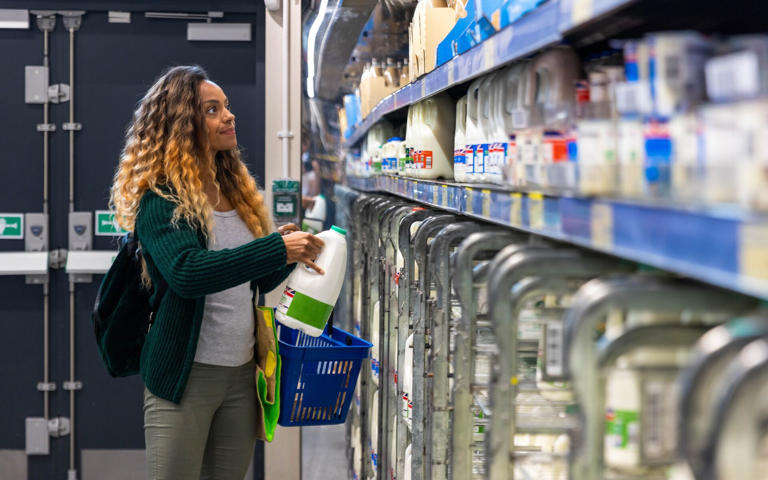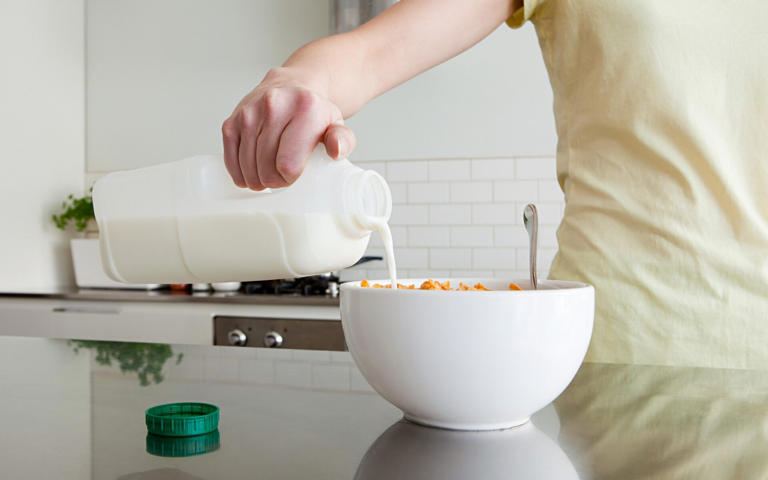Five ways to make your milk go further – even if it has gone off
The news that Marks & Spencer is replacing “use by” dates with “best before” dates on its milk sounds like good news for food waste concerns. The retailer says it hopes the move will prevent millions of pints being poured down the sink, and that customers will be encouraged to use their judgement before ditching un-drunk dregs.
But it raises the question – how do we know that milk is no good any more? Trust our nose, we’re told, but as for most of us the mere thought of inhaling the fumes of sour milk
First – school of the bleeding obvious – check that best before date and factor in how you’ve looked after your milk. Temperature matters. Milk goes off when it gets too much bacteria in it, which turns the lactose in the milk into lactic acid. This in turn curdles the proteins (casein and whey protein) to make curds and whey. All of this happens much more quickly at room temperature than at the optimum 3C storage temperature.
Was there more than an hour between popping the bottle in the trolley and getting it in your fridge at home? Did it have to undergo a hot car drive home? Does the family regularly take the bottle out for tea and then leave it on the work surface for half a day? Is it a busy fridge, opening and shutting all the time, letting warm air in? All of these factors will shorten the life of the milk.

Then there’s how much the milk was exposed to air, and so pesky bacteria. Unopened bottles of milk will keep as much as a week longer than opened bottles. If, like me, you’re lucky enough to live near a shop where you can refill your own milk bottles from a dispenser, you get all the green stars – but you should also be aware that the milk won’t last as long as the sterile stuff in a plastic container from the supermarket.
Next, look, tipping the bottle slightly. Is it liquid? Any sense that it’s “set” means you are dealing with yogurt, but curdled flecks on top is also a worrying sign. If your milk is unhomogenised, there may be some streaks of yellowish cream, which are nothing to worry about. Pretty much all supermarket milk is homogenised, with the exception of Duchy Organic from Waitrose (the King, apparently is a fan of unhomogenised and insisted that it stayed that way) and some of the extra-rich milks such as Graham’s whole milk.
A little unsure? When you’re making a round of brews, don’t pour it in all the cups of tea at once – try it in one, and give it a few seconds. The tannins and acids in tea will curdle milk that has just a suggestion of “off” – so you’ll see flecks of solids floating to the top. Even if it doesn’t do that, taste it – again, the tannins in tea really brings out cheesy flavours.
You can also try heating the milk –probably not ideal for tea, but good for coffee and white sauces. The heat will coagulate milk that’s too acid – in the industry this is known as the Clot On Boiling or COB test.
If it has passed all these tests, and you are still not happy, there’s nothing left but to take the lid off and give a little sniff. If it is clean and sweet smelling, you can pour it on the cornflakes. A faint whiff of cheese or crème fraîche? Probably best to use for cooking or yoghurt. Really pongy? Try it on the garden – apparently that smell can deter deer. Not just us, then.
What to do with off milk
There’s no hard-and-fast rules on how to use soured milk, as the bacteria that have caused the formation of acid will vary. Some form a clean-tasting sourness, but some are bitter. So – nothing for it – you need to taste a tiny bit (don’t worry – small amounts won’t make you ill). Steel yourself, you can do it. As long as it is just a bit cheesy, a bit a bit yoghurty, you are good to go.
Make yoghurt
Heat the milk to 85C then allow it to cool to 40C. Stir in 3 tbsp live yoghurt. Fill a Thermos flask with boiling water to warm it, then tip away the water and pour in the milk. Seal tightly and leave overnight. The yoghurt should be thick by the morning.
Use it in baking
Add 1 tbsp lemon juice or vinegar per 250ml (less if the milk is very sour) and use in baking in place of buttermilk.
Marinate meat
To tenderise meat, pour over sour milk and leave for four hours in the fridge, then drain and cook.
Make a classic Italian dish
Italian maiale al latte, pork braised in milk, makes a virtue of curdled milk.
Use it in the garden
Diluted milk (50-50 with water) is said to be good for boosting the calcium level of plants, as well as sprayed as a fungicide and pesticide. The smell may put deer off as well.
Story by Xanthe Clay: The Telegraph:

